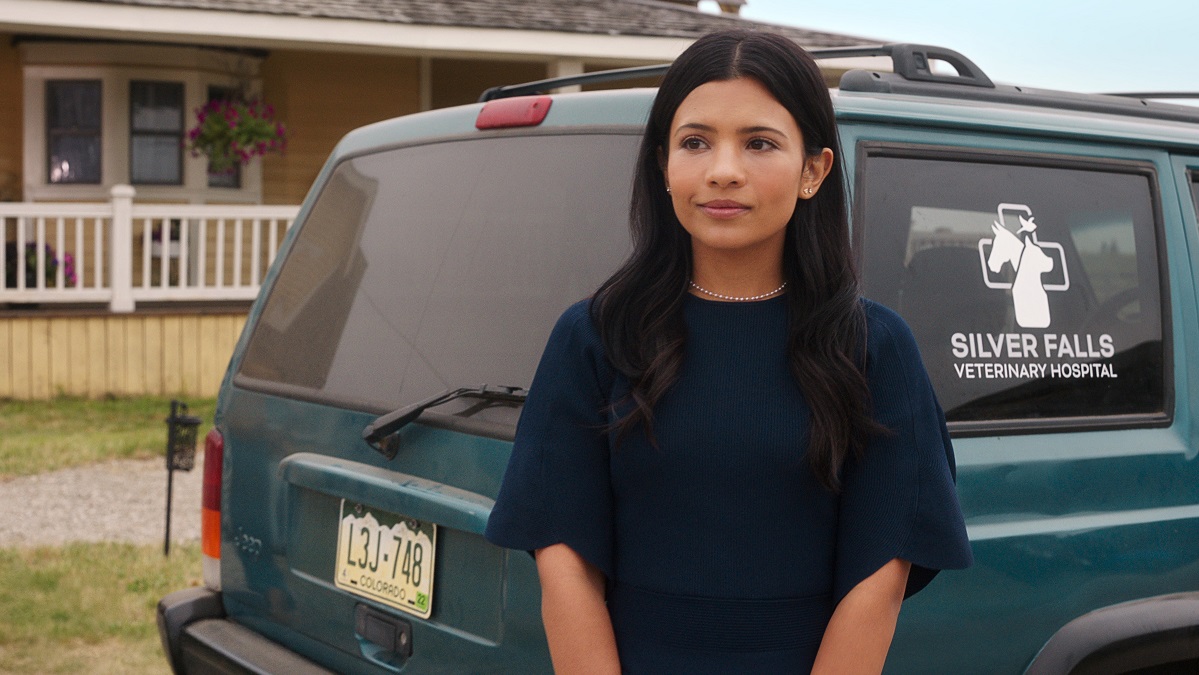What Is the Role of Design in Retail?

Design plays an important role in retail by influencing how customers interact with a space. A well-thought-out layout can guide shoppers through products, maximizing exposure and encouraging purchases. Elements like lighting and materials create an inviting atmosphere, whereas visual branding establishes a connection with consumers. Comprehending these components is vital for retailers aiming to improve customer experiences. As you explore further, you’ll discover how these design strategies can greatly impact sales and loyalty.
Key Takeaways

- Retail design shapes the shopping experience, influencing customer behavior and encouraging return visits through positive interactions.
- Effective layouts maximize product exposure and accessibility, guiding customer flow and enhancing sales opportunities.
- Lighting and material choices create inviting atmospheres that improve comfort and product visibility, increasing dwell time.
- Visual branding establishes a cohesive shopping experience, fostering emotional connections and customer loyalty through consistent messaging.
- Sensory elements like sound and scent enhance the shopping experience, promoting exploration and longer customer stays.
The Importance of Retail Design

When you consider the role of retail design, it’s clear that it plays a fundamental part in shaping the shopping experience.
Effective retail design creates intuitive store layouts that improve customer flow, guiding shoppers through strategically placed merchandise. This thoughtful approach can greatly increase foot traffic and sales.
Moreover, a well-executed design can lead to a 90% likelihood of customer return visits, emphasizing the importance of positive experiences.
Lighting serves as another crucial component, influencing emotions and purchasing decisions.
Integrating brand identity throughout the environment reinforces recognition and loyalty.
Finally, trends indicate a shift toward sustainable practices and experiential environments, suggesting that modern retail spaces must adapt to evolving consumer preferences to remain competitive, as discussed in various retail blogs.
Key Design Elements in Retail Spaces

Comprehending key design elements in retail spaces is vital for creating an effective shopping environment that meets both customer needs and business goals.
Here are three fundamental design elements to evaluate:
- Lighting: Utilize ambient, accent, and task lighting to create inviting atmospheres and highlight products, enhancing the overall shopping experience.
- Materiality: Choose aesthetically pleasing and durable materials to boost both ambiance and functionality, encouraging customers to explore longer.
- Sensory Appeal: Integrate sound and scent into your space; for instance, curated music playlists can improve customer mood and increase dwell time.
Understanding Store Layouts

Design elements play a pivotal role in shaping the overall shopping experience, but store layouts are equally important for guiding customer behavior and maximizing sales opportunities.
Store layouts impact how you navigate the space and your likelihood of making purchases. For instance, grid or loop layouts optimize product exposure and accessibility, as placing high-demand items on the right side leverages your natural tendency to turn right upon entering.
Furthermore, a decompression zone within the first 5 to 15 feet helps you adjust before plunging into shopping. Free-flow layouts encourage exploration and improve the shopping experience, even though they may cause navigation confusion.
Creating an Inviting Ambiance

Creating an inviting ambiance in retail starts with careful lighting and material selection.
By using warm materials and comfortable flooring, you can make customers feel at ease, encouraging them to stay longer.
Furthermore, well-planned lighting can improve product visibility and create a welcoming atmosphere, making it crucial to balance different types of lighting effectively.
Importance of Lighting
Lighting plays a crucial role in retail environments, greatly impacting the overall shopping experience.
An effective lighting design not only improves product visibility but likewise creates an inviting ambiance that encourages customers to explore longer, which can lead to increased sales.
To achieve this, consider these three elements:
- Ambient Lighting: This provides general illumination, ensuring the space feels welcoming and accessible.
- Accent Lighting: Use this to highlight key merchandise, drawing attention to featured products and promotions.
- Natural Light: If possible, incorporate skylights to improve mood and clarity, as natural light is known to enhance the shopping atmosphere.
Material Selection Impact
Material selection greatly impacts the ambiance of a retail space, influencing how customers perceive and interact with their surroundings. Choosing warm materials like natural woods and soft textiles creates a welcoming atmosphere, encouraging customers to linger.
In high-traffic areas, durable materials are essential for maintaining aesthetics during ensuring longevity and reducing maintenance costs. Furthermore, using contrasting materials can define zones, guiding consumer movement and enhancing product visibility.
A thoughtful combination of textures and colors can evoke specific emotions, impacting purchasing decisions. Incorporating sustainable materials aligns with consumer preferences for eco-friendly practices, boosting brand image and customer loyalty.
In the end, your material choices play a significant role in shaping the overall experience and satisfaction of your customers.
Visual Branding and Consumer Engagement

Though visual branding plays a crucial role in shaping consumer engagement, it goes beyond mere aesthetics to create a cohesive shopping experience. By ensuring consistency in exterior and interior elements, you improve brand recognition and guide customer navigation.
Here are three key aspects of visual branding that can boost engagement:
- Effective Signage: Using consistent fonts and strategic placement helps direct customers to key merchandise, influencing their purchasing behavior.
- Visual Identity: A well-executed visual identity reflects your merchandise and target market, nurturing emotional connections that encourage loyalty.
- Visual Merchandising: Implementing effective layouts and displays increases product visibility, driving impulse purchases and creating memorable shopping experiences.
These elements contribute to higher customer return rates, in the end increasing the likelihood of repeat visits.
Current Trends and Future Directions in Retail Design

As retailers adapt to the evolving environment of consumer behavior, current trends in retail design focus on creating immersive experiences that resonate emotionally with customers.
With 90% of consumers indicating that positive experiences increase their likelihood of returning, engaging environments are fundamental. Sustainable practices, such as using eco-friendly materials, are also significant, reflecting the demand for environmentally conscious shopping.
Furthermore, omnichannel retailing drives the need for designs that seamlessly integrate online and offline experiences, utilizing technology like augmented reality. Retail spaces are increasingly community-oriented, hosting events to promote local engagement.
Looking ahead, retailers must address environmental and social impacts, emphasizing ethics and collective well-being as crucial components of successful retail strategies.
Frequently Asked Questions

What Does a Retail Designer Do?
A retail designer creates the store’s visual and functional aspects, ensuring they align with the brand’s identity.
You’ll find them working on layouts, lighting, signage, and product displays to improve customer experiences. They analyze consumer behavior to optimize store navigation and increase foot traffic.
Collaborating with architects and marketers, retail designers integrate aesthetics with functionality, and they stay updated on trends like sustainability and technology to create engaging shopping environments.
Why Is Retail Design Important?
Retail design’s important as it shapes how customers interact with a store. A well-structured layout guides you through products, enhancing accessibility and encouraging purchases.
Studies show that inviting spaces can lead to a 90% chance of return visits. Furthermore, sensory elements like lighting and music influence your emotions, making shopping enjoyable.
Strong branding throughout the environment reinforces identity, attracting and retaining customers, whereas adapting to trends keeps the store relevant and competitive.
What Is the Main Goal in Retail Design?
The main goal in retail design is to create a shopping environment that engages customers effectively. This involves optimizing store layouts to improve product visibility and accessibility, guiding shoppers through merchandise.
Elements such as lighting and signage are vital in influencing customer emotions and decision-making. By nurturing a positive shopping experience, you increase the likelihood of repeat visits, in the end driving customer loyalty and boosting sales performance in a competitive market.
What Is the Function of Store Design?
Store design functions to create a seamless shopping experience by directing customer flow and enhancing product visibility.
You’ll notice that a well-planned layout encourages you to engage with merchandise easily. Strategic lighting highlights key products, nurturing an inviting atmosphere.
Furthermore, effective design reflects a brand’s identity, ensuring consistency that resonates with you and other consumers.
Conclusion

In summary, effective retail design is vital for enhancing the shopping experience and driving sales. By focusing on key elements such as layout, ambiance, and visual branding, you can create an inviting space that encourages customer engagement. Staying updated with current trends and adapting to future directions will help you maintain a competitive edge. In the end, thoughtful design not just attracts customers but likewise nurtures long-term loyalty and repeat visits, making it a fundamental aspect of retail success.
Image Via Envato
This article, "What Is the Role of Design in Retail?" was first published on Small Business Trends
What's Your Reaction?
 Like
0
Like
0
 Dislike
0
Dislike
0
 Love
0
Love
0
 Funny
0
Funny
0
 Angry
0
Angry
0
 Sad
0
Sad
0
 Wow
0
Wow
0


















































![Øyunn finds "New Life" in latest single [Music Video]](https://earmilk.com/wp-content/uploads/2025/08/oyunn-800x379.png)










































